It’s no surprise that diet programs make big promises.
But, not all of them are effective, and some are anything but healthy. And there’s certainly no shortage of those that are just plain crazy – like the Twinkie diet!
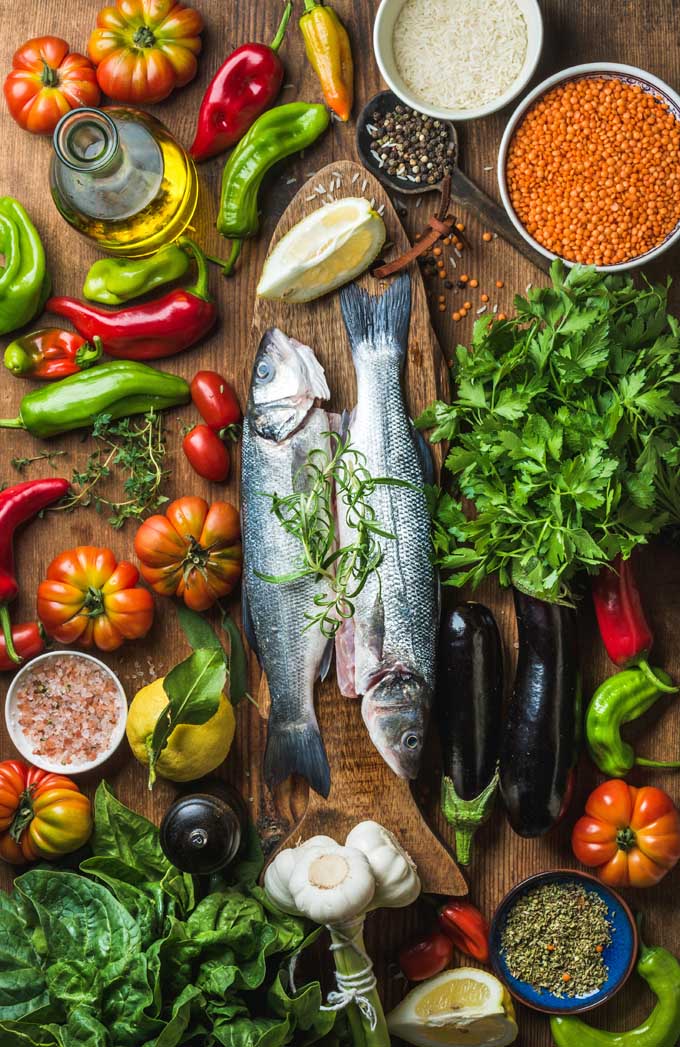
Many of us are looking for a bit of health help, whether the goal is to lose weight, reduce the risk of chronic disease, improve sleep, or simply increase energy levels.
And it can be mighty confusing to try to find a program that will suit our needs, as well as our tastes and lifestyles.
With that in mind, we’ve compiled an overview of seven popular programs. Some offer weight loss, while others focus on specifics like heart and brain health – and all promise to be beneficial for greater overall health and vitality.
Just to be clear, none of these programs fit into the “lose 30 pounds in 3 days” niche. They’re all geared towards adopting a long term eating plan that will contribute to a healthier, happier you.
To help you make an informed choice, in this article we’re looking at the pros and cons of the following diet programs:
And there’s also a cookbook recommendation for each program to help you get started.
Mediterranean Diet
The Mediterranean Diet Heart Healthy Recipes & Desserts Cookbook provides healthy recipes, medical research, a background of the Mediterranean lifestyle, practical tips, and details the benefits as well as potential side effects.
Several health authorities recommend the Mediterranean diet as a heart healthy eating plan, and the combination of foods has also been shown to effectively improve insulin sensitivity, making it a good option for diabetics as well.
Plus, it’s a good choice for sensible weight loss, of the slow and steady variety.
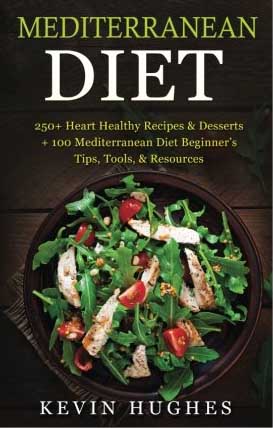
Mediterranean Diet Heart Healthy Recipes & Desserts Cookbook
For optimal nutrition from natural sources, it provides a balanced choice of foods that includes fish, poultry, vegetables, fruit, legumes, nuts, and whole grains as well as healthy fats.
It does allow for some pasta and breads, although the bread is traditionally dipped in olive oil or spread with Greek tzatziki sauce, and not slathered in margarine or butter.
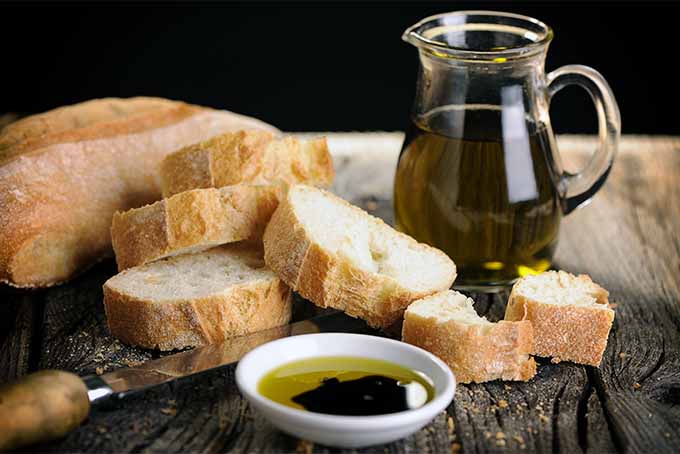
Plentiful in herbs and spices, it emphasizes a reduction in processed foods, salt intake, and red meat consumption.
Pros
Adopting a traditional Mediterranean eating plan has several health benefits to offer.
Among them, it’s heart smart, lowers the risk of developing diabetes, and it trims down the pounds.
Plus, it’s a well-researched program that has been proven effective.
With a strong emphasis on plant-based recipes, it provides a good balance of carbs, proteins, healthy fats, and all the nutrients needed for optimal health.
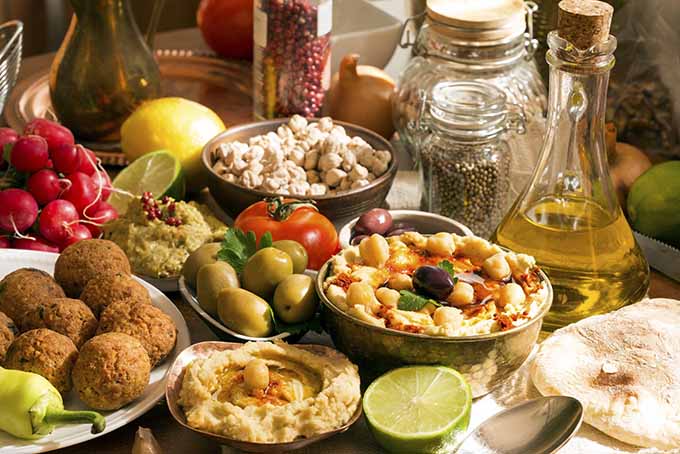
The Mediterranean Diet is economical and easy to follow with basic, fresh ingredients, and is easily adapted for a broad menu selection. A classic Greek salad is a perfect example of utilizing fresh, Mediterranean flavors and ingredients.
And, this food lifesytyle allows for a daily glass of red wine!
Cons
While most folks will enjoy the moderate consumption of wine, it may not be a good choice to mix with certain medications. But, a glass of purple grape juice makes a suitable alternative.
The Bottom Line
Sensible, smart eating at its best, the Mediterranean option is beneficial for specific health concerns (like heart health and diabetes) and is one of the best for overall vitality.

The suggested foods are adaptable for an interesting and varied menu, with delicious meals that are easy to prepare and sure to satisfy.
Follow your heart (healthy) to Amazon now and check out this diet book.
The Paleo Diet
Updated with a comprehensive explanation of the 4R protocol (Remove, Repair, Reinoculate, and Reintroduce), Practical Paleo, 2nd Edition provides recipes, tips to weather holidays and parties, and a 30-day eating plan.
The Paleo program is based on the eating habits of our prehistoric ancestors.
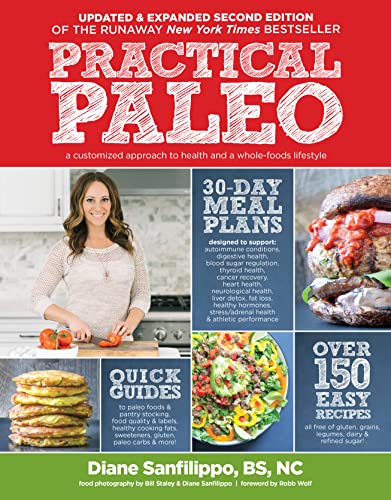
Of course, they didn’t leave menus for us to follow, so it does make some assumptions. But we can be pretty sure they didn’t eat a lot of processed foods.
On Paleo, foods mimic what early hunter-gatherers would have dined on. There’s plenty of animal proteins and fats from game, wild salmon, grass-fed beef, free-range chicken, and eggs, as well as moderate amounts of unprocessed carbs from fruit and vegetables, and some healthy fats from raw nuts and seeds.

An interesting concept of this plan is that you can jump right in to the nitty-gritty phase, or transition gradually to the more restrictive phase over a couple of weeks.
The first phase permits some meals from your old eating regime and transitional items such as condiments, which you wean off of as the plan progresses.
By phase two, all processed and packaged foods are eliminated, as are grains, beans, legumes, dairy, and added salt.
Pros
Processed and high calorie foods are significantly reduced, which lessens the body’s glycemic load and leads to weight loss.
There’s no calorie counting, which makes it easy to implement and follow, and it also provides a feeling of satiety.
The flexible introductory period makes it an easy plan to stick with, which can lead to long term success.
Cons
Paleo excludes food groups such as dairy, legumes, beans, and grains with no concrete evidence that this improves overall health.
And with the lack of dairy products and whole grains, nutritional deficiencies can result, with supplements required to meet baseline health requirements.
Most versions of this diet encourage consumption of large amounts of meat products, including red meat. This is contrary to prevalent health advice, including the American Cancer Society’s Guidelines on Nutrition and Physical Activity for Cancer Prevention.
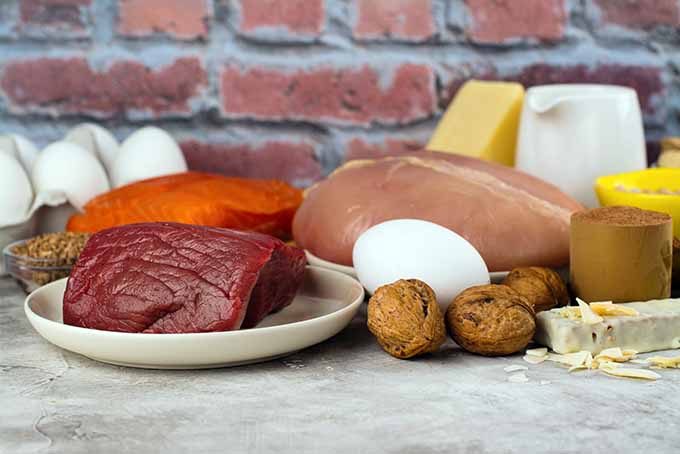
And you can expect a hit to your wallet. Products such as grass-fed and steroid-free beef, wild game, and free-range chicken are all considerably more expensive than their traditionally farmed counterparts.
Because of the heavy focus on meat, a fairly common complaint is that it also lacks variety – which can lead to boredom and straying from the path.
The Bottom Line
Research on the Paleo diet is quite limited, making long-term health claims somewhat unsound. Although initial weight loss is generally experienced, new evidence suggests weight gain and increased insulin resistance in the long term.
With a primary focus on specialty meat products, it’s an expensive plan to follow. And with animal proteins suggested for every meal, you have to be a real meat-lover to stick with it.
Pick up your copy on Amazon today.
The DASH Diet (Dietary Approaches to Stop Hypertension)
The DASH for Beginners cookbook includes nutrient-rich whole food recipes, tips for making the DASH plan work, and an eating plan.
In recent years, the DASH program has consistently earned the top spot in diet plan rankings (as rated by US News & World Report) as best overall, the healthiest, and the best diet for diabetics.
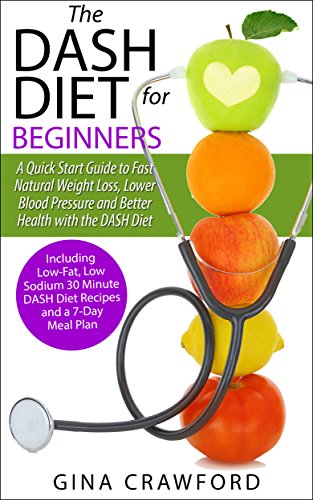
It’s effective at reducing blood pressure and cholesterol levels, as well as lowering the risk and development of several chronic degenerative diseases such as cancers, heart disease and stroke, diabetes, and kidney failure.
DASH focuses on plenty of fruits, vegetables, whole grains, low fat and heart-smart fats, fish, poultry, lean meat, beans, and nuts – with red meats, sugary drinks, sodium intake, and processed grains minimized.
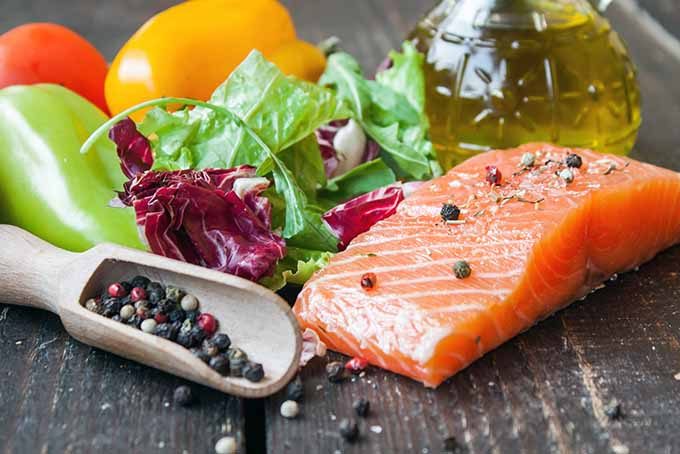
Portion size is emphasized over calorie counting, as is eating a variety of healthy foods in order to obtain essential nutrition from whole food sources.
The American Heart Association (AHA) recommends DASH as an effective plan to manage blood pressure. And the US Dietary Guidelines for Healthy Americans (2010) endorses it (and the Mediterranean), for its well-documented and substantial health benefits.
Pros
Studies have shown the DASH plan to dramatically reduce blood pressure, LDL cholesterol, and triglycerides.
It also meets the nutrient requirements of the US Institute of Medicine, thanks to the natural sources of nutrient-dense foods.
DASH encourages making healthy food choices, and provides enough variety to satisfy hunger and taste buds.
Consistent, steady weight reduction is another benefit.
Cons
For effective results, portion sizes need to be diligently regulated, which can be challenging for some folks.
Followers of the plan will need to develop the habit of reading labels to eliminate hidden sources of sodium and sugar.
The Bottom Line
The DASH diet is another well-rounded plan that’s rich in natural foods. It delivers on the promises of heart health, alleviating diabetes, and overall health and vitality.
The suggested foods can be adapted for numerous delicious recipes, and most find it satisfying – even with limited portion sizes.
Read what others had to say on Amazon.
Vegan
The Vegan Black Book provides recipes that promise to be fast, easy, and delicious – and there’s an enticing photo with every recipe to inspire the fledgling vegan.
Like vegetarians, vegans don’t eat meat, poultry, or fish.
But, while some vegetarians will consume animal byproducts, vegans won’t eat or use items produced by animal labor or animal exploitation. This includes eggs, dairy, honey, wool, leather, silk, and cosmetics or soaps derived from animal products or labor.
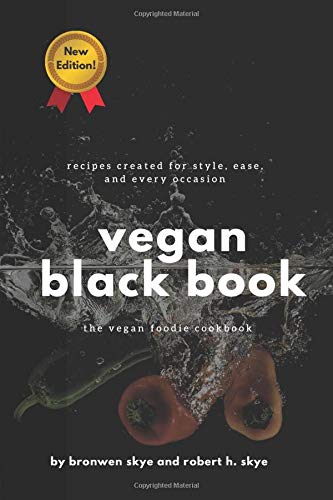
Vegan Black Book: The Vegan Foodie Cookbook
Vegans often go this extra mile not only for dietary purposes, but also because of humane, ethical, and environmental motives.
Pros
With no animal proteins and plenty of whole foods, a vegan eating plan is low in saturated fats and cholesterol, which results in lower serum cholesterol and blood pressure for a healthy heart.
It can also improve valuable antioxidant intake, due to the abundance of fruits, berries, and vegetables.
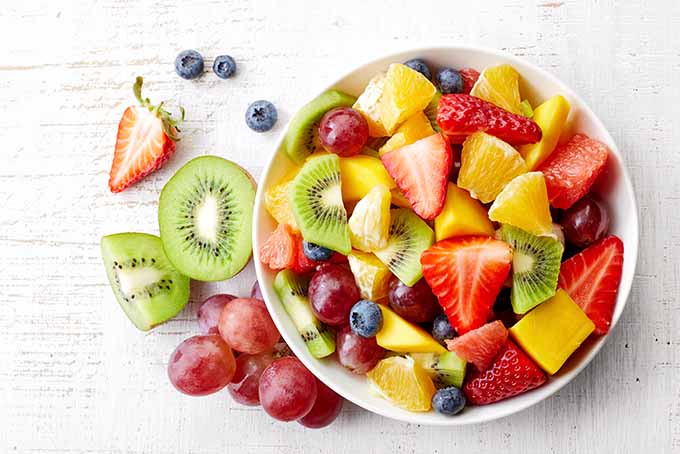
Plus, fiber intake is usually greater than a standard diet because of the plentiful whole grains, beans, and legumes – which can help with feelings of satiety, and regular elimination.
Cons
Adopting a vegan eating program can be a radical change, and learning how to plan meals that provide all of the essential nutrients, vitamins, and minerals can be a steep learning curve.
Vegan diets can be low in certain nutrients such as vitamins B12 and D, calcium, folate, and omega-3 fatty acids, requiring the use of supplements or fortified foods.
And relying on proteins from only plant sources, such as pulses and legumes, can lead to digestive difficulties for some.

Vegans also need to ensure adequate calcium intake to protect bone health and prevent osteoporosis. One large study in the UK over a five-year period found a 75 percent greater incidence of bone fractures among vegans compared to vegetarians, fish eaters, and meat eaters.
The Bottom Line
Highly restrictive in food groups, veganism shows no discernable improvement in health benefits over vegetarian or plant based diets such as the Mediterranean. And supplements or fortified foods are often needed to meet essential nutrition requirements.

You can also expect to dedicate a substantial amount of time to learning how to cook meals that will taste good and satisfy hunger.
Find out what the chatter is about on Amazon.
The MIND Diet (Mediterranean-DASH Intervention for Neurodegenerative Delay)
Power Foods for the Brain outlines a 3-step plan on which foods to increase and which to avoid, interesting research, a detailed menu plan with recipes, and time saving tips for a new eating regime.
The MIND eating plan has taken the benefits of two proven programs (DASH and the Mediterranean), and tweaked them with the foods that can directly improve brain health, and prevent the onset of Alzheimer’s disease (AD).
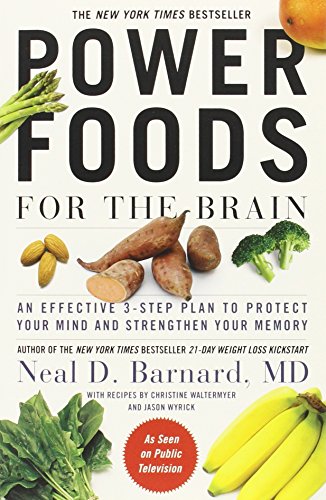
Power Foods for the Brain: An Effective 3-Step Plan to Protect Your Mind and Strengthen Your Memory
The MIND focus is on eating an abundance of brain-healthy foods with plenty of omega-3 fatty acids, and eliminating those that contribute to neurodegenerative disease.
The ten brain-boosting foods promoted by this plan are leafy green veggies and vegetables in general, berries, beans, whole grains, nuts, fish, poultry, olive oil, and red wine (or purple grape juice for the teetotalers).
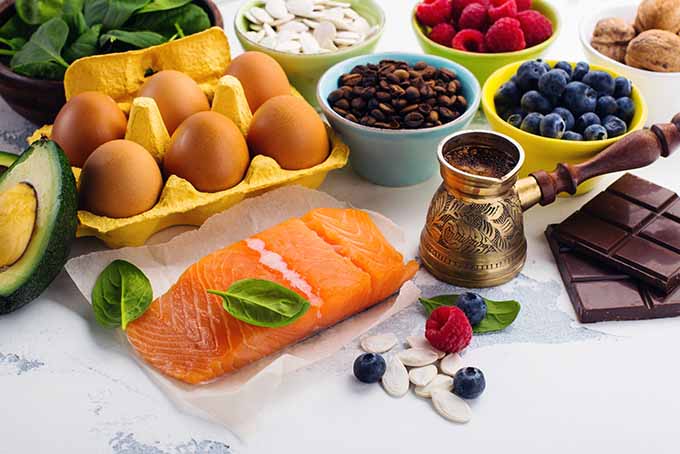
The unhealthy foods to be avoided are the usual suspects – red meat, butter, cheese, stick margarine, refined sugars and flours (i.e. sweets and pastries), fast foods, and fried foods.
Those who strictly adhere to the MIND plan have been shown to reduce the risk of Alzheimer’s on an average of 53 percent, according to studies published in the Journal of the Alzheimer’s Association. And in the same study, those with only moderate adherence to the MIND plan still improved their risk reduction by an average of 35 percent.
Pros
The MIND diet has been shown to significantly lower the odds of developing Alzheimer’s disease. Even moderate adherence shows a substantial decrease in the chance of developing AD.
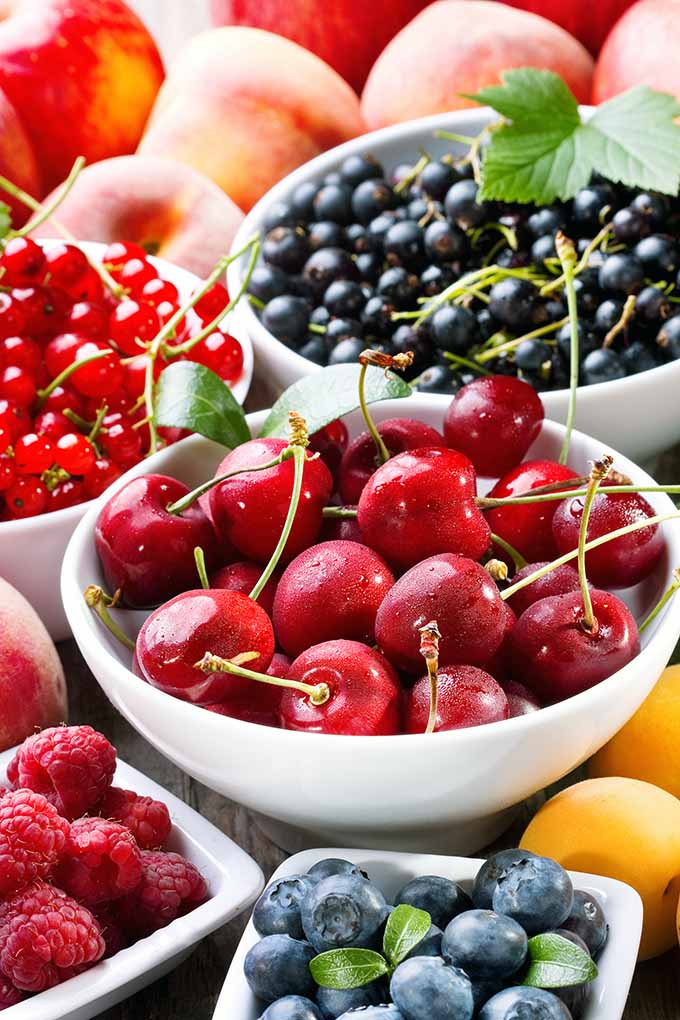
No foods are completely forbidden, and the occasional indulgence can be helpful in sticking to the overall plan.
Getting the required daily and weekly servings of the 10 recommended brain-boosting foods is easy to achieve.
Staying the course is relatively easy, as most will find the menus and portion sizes to be sufficiently satisfying and filling.
Cons
A bit of organization and meal planning is required to stay within the guidelines.
The Bottom Line
The MIND plan has refined two health-inducing diets to provide an improvement in overall health, as well as outstanding results for a healthy, youthful brain.
With flexible guidelines, it’s easy to follow with oodles of fresh, natural ingredients, satisfying portions, and tasty meals.
Check out this brain boosting phenomenon on Amazon now.
The Flexitarian Diet
The Healthy Hedonist cookbook offers a variety of mainly vegetarian recipes using fresh, whole foods that will satisfy a variety of eating habits.
The primary focus of the Flexitarian menu is mostly vegetarian, with the primary source of proteins coming from plants such as legumes, beans, and tofu. But it does allow for the occasional foray into meat-based meals of fish and poultry, and even small portions of red meat.
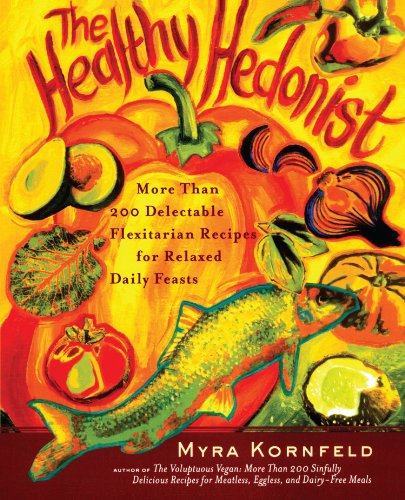
The Healthy Hedonist: More Than 200 Delectable Flexitarian Recipes for Relaxed Daily Feasts
It provides the many health benefits of a plant based menu, such as improved heart health, lower blood glucose levels, and weight loss, but doesn’t leave carnivores feeling completely deprived.
Rather than removing certain foods, new groups are introduced and emphasized in the Flexitarian regime that crowd out the old. The five main food groups are the “new meat” products of beans, lentils, nuts, seeds, and tofu, plus fruits and veggies, whole grains, dairy, sweeteners and spices.
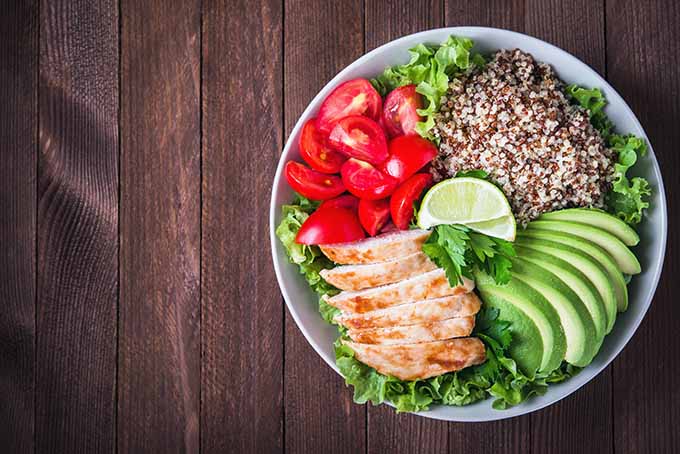
As the name suggests, menus can be quite flexible with a wide assortment of satisfying vegetarian, fish, and poultry recipes fitting the program criteria.
Pros
The Flexitarian Diet doesn’t completely remove meat from the table, which can make it easier to follow for those who don’t want to commit to full-time vegetarianism. But it still delivers all of the health benefits of a plant based regime.
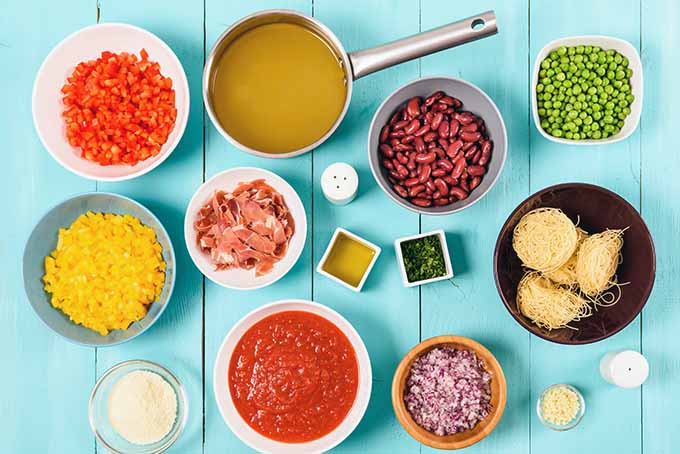
Effective for improving overall health, many also find weight loss to be a nice side benefit.
A flexible eating plan makes it easily adaptable to most tastes, and tasty plant-based meals will provide plenty of fiber for feelings of satisfaction and satiation.
Cons
The very flexibility of this program might be detrimental for those who like a lot of structure to guide their eating, particularly if your focus is weight loss.
If you’re not familiar with plant proteins, learning how to work with the “new meats” can be somewhat time consuming at the beginning.
Vitamin and mineral supplements are usually recommended, to get all the essential baseline nutrients.
The Bottom Line
A good diet for those who want the health benefits of meatless meals, but don’t want to give up meat entirely. But be prepared to spend a bit more time initially on meal preparation.
Grab a copy over on Amazon and find out more now.
The Raw Food Diet
The Practically Raw cookbook is a good introduction to raw cuisine. With recipes and full color illustrations, it also contains nutritional information, a pantry list, and info on techniques and required equipment.
Proponents of a raw food diet claim that foods in their natural, whole state contain nutrients and enzymes that break down or are lost in cooking.
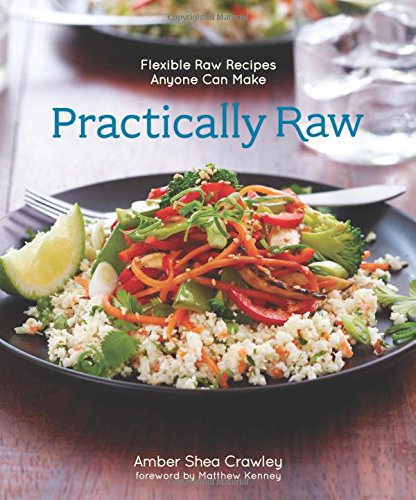
Practically Raw: Flexible Raw Recipes Anyone Can Make
The idea is that these enzymes help the body absorb nutrients better, and ward off chronic disease, resulting in greater health.
However, nutritionists tell us this is a limited view. Some vegetables, such as tomatoes, spinach, kale, onions, and garlic, are more nutritious after being lightly cooked, as cooking releases compounds that would otherwise go undigested.
The main components of a raw foods plan are organic fruits, vegetables, sprouted grains, seeds, and nuts. Dried or dehydrated foods are also permitted, provided they contain no additives, and fermented foods are encouraged. Some will also consume unpasteurized dairy foods, and products like raw eggs, fish, and meats.

Processed and pasteurized foods are completely eliminated, and it’s naturally low in sodium as well.
Pros
Eating an abundance of fresh fruits and veggies is beneficial for heart health, as they aid in the control of blood pressure and cholesterol. And the low sodium content also contributes to the risk reduction for some cancers and stroke.
With the elimination of processed foods, chances are very good you’ll lose weight on this plan.
Cons
With severely restricted food groups, meal planning can be onerous and a lack of variety can result in boredom.
Prepping for meals can also be time consuming, as blending ingredients, dehydrating foods, and germinating nuts and seed sprouts are important components. Owning useful tools in the kitchen is essential for a raw food chef to help cut down on prep time.
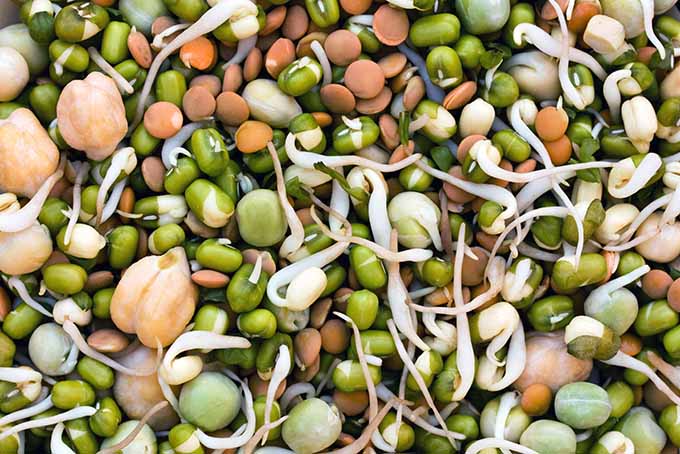
If you choose to go organic as recommended, ingredient selection at your local grocery store can be limited, and organic produce is typically more expensive than traditional produce.
As unpasteurized foods can also be susceptible to foodborne pathogens, this diet can be risky for certain folks – particularly pregnant women, the elderly, those with weakened immune systems, organ transplant recipients, and those with chronic disease.
Plus, some people find that it contributes to digestive issues.
Common complaints with a raw foods regime are feelings of hunger and weakness, and bland-tasting dishes.
And supplementation with vitamins and minerals is required to meet essential nutrition.
The Bottom Line
Healthy in the aspect that it eliminates processed foods, the strict guidelines of a raw diet also eliminate many food groups that are usually recommended for balanced nutrition.
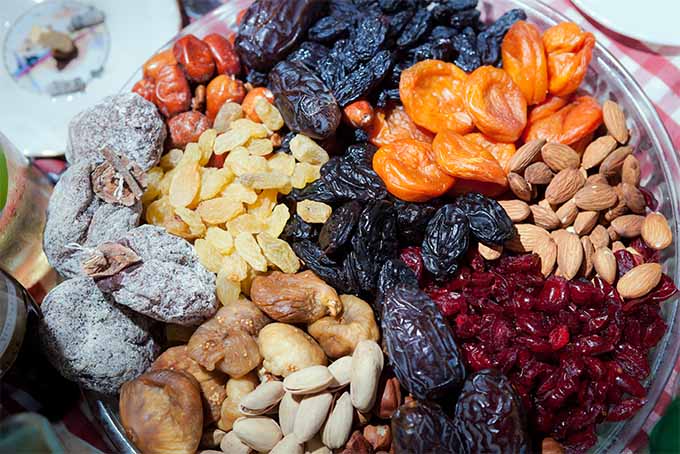
Food preparation can be time consuming, out of season and organic produce can be expensive, and you’ll need to invest in a good blender and dehydrator as well.
This regime is not suitable for those with compromised immune systems or digestive problems. If you have digestive issues, you might want to consider an alternative low FODMAP diet plan.
The Long-Term Vision
Some simple changes in what we consume can have a profound effect on all aspects of our lives, not just physical health. Emotional well being, self-esteem, relationships, work, and of course, longevity can all benefit from adopting a healthier eating plan.
If you have a hard time sticking to a new diet, we’d also suggest you pick up a copy of The Power of Habit.

The Power of Habit: Why We Do What We Do in Life and Business
It’s an easy reads with top-notch advice on how to adopt empowering new thoughts and behaviors, like smart eating.
And how about you folks – any thoughts or insights you can share on the programs we’ve mentioned? Drop us a note in the comments below!
Don’t forget to Pin It!
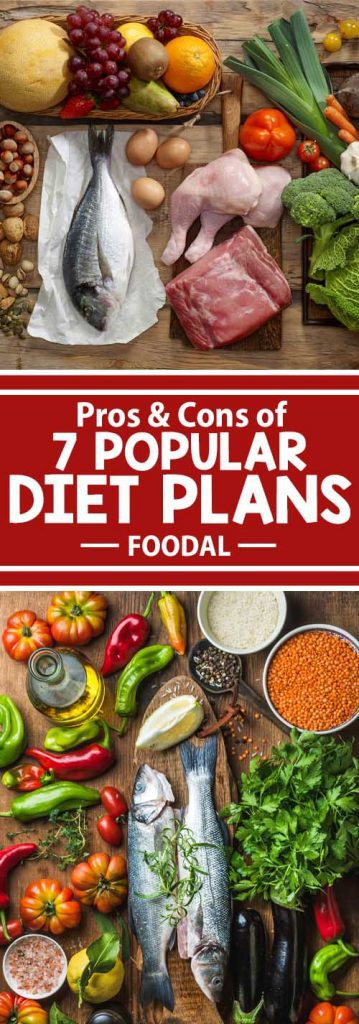
Photo credits: Shutterstock and various book publishers.
The staff at Foodal are not medical professionals and this article should not be construed as medical advice. Foodal and Ask the Experts, LLC assume no liability for the use or misuse of the material presented above. Always consult with a medical professional before changing your diet, or using supplements or manufactured or natural medications.
About Lorna Kring
Recently retired as a costume specialist in the TV and film industry, Lorna now enjoys blogging on contemporary lifestyle themes. A bit daft about the garden, she’s particularly obsessed with organic tomatoes and herbs, and delights in breaking bread with family and friends.




I’m not even a vegan, however I could see how this con “Highly restrictive in food groups” would sound derisory to the devoted vegan persuasion. There’s only one true category of edible organic matter that is alien to it: animal products. Now should you think of “food groups” purely that way, that leaves everything else in nature up for grabs!